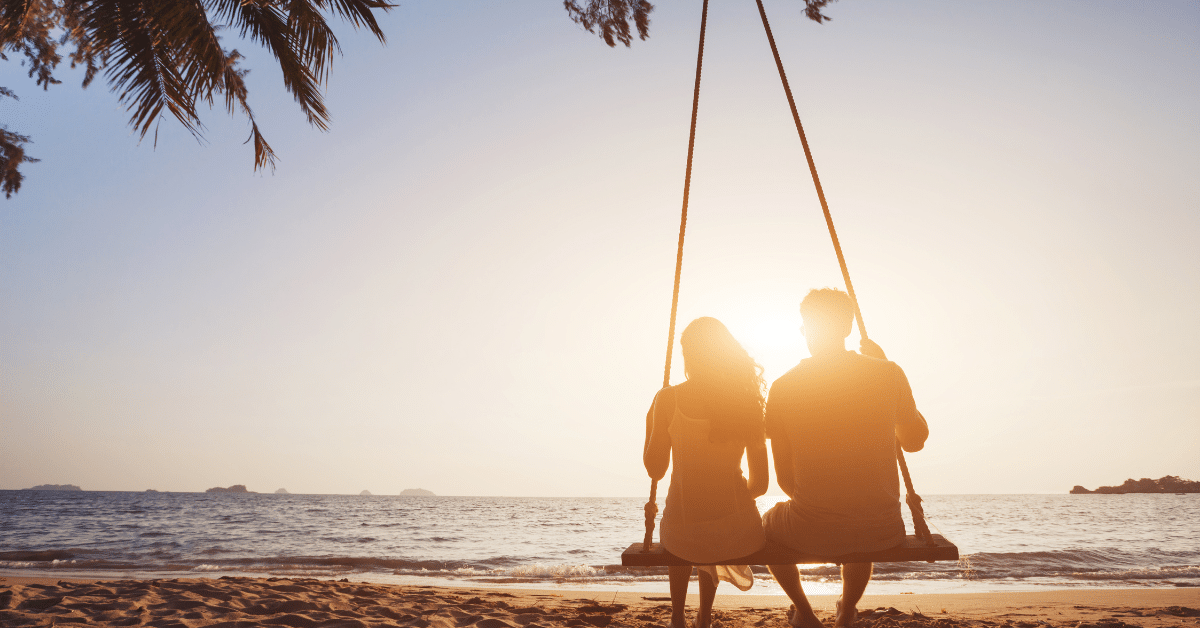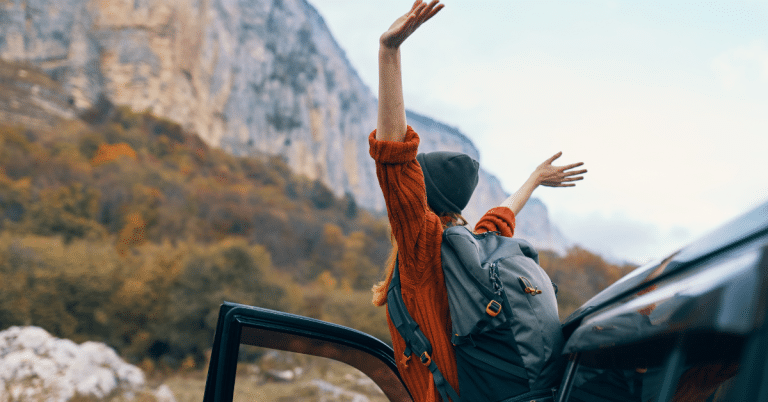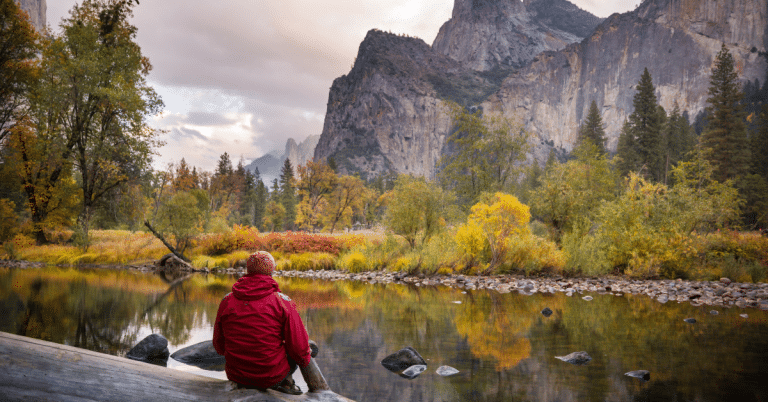Unique Outdoor Honeymoon Ideas for Nature Lovers

Author: Troy De Ville
For newlyweds passionate about nature, spending their honeymoon in the great outdoors can be an unforgettable experience. From breathtaking landscapes to thrilling outdoor activities, nature has much to offer honeymooners seeking adventure.
Although “unique” may be subjective, we guarantee to present unique outdoor Honeymoon idea options that will satisfy your significant other. You won’t find the same old boring “Caribbean” or “cruise” suggestions here.
Here are some unique honeymoon ideas for nature lovers who want to explore the wild.
Exciting Honeymoon Destinations for Adventurous Couples
Exploring new places and experiencing thrilling activities together can create unforgettable memories that will last a lifetime.
Are you and your significant other the adventurous type? If so, an adventurous honeymoon destination might be what you’re looking for.
There are plenty of exciting destinations to choose from, whether you’re seeking mountainous or desert landscapes or tropical rainforests.
Where Are The Best Places for Honeymooners To Go Camping?
- Yosemite National Park, California: Yosemite is one of the most beautiful national parks in the United States, and it’s a great place to go camping with your spouse. There are plenty of campsites to choose from where you can enjoy hiking, biking, and swimming.
- Grand Canyon National Park, Arizona: The Grand Canyon is another stunning national park perfect for a honeymoon camping trip. You can hike down into the canyon, take a mule ride, or simply relax at one of the campsites and enjoy the views.
- Yellowstone National Park, Wyoming/Idaho/Montana: Yellowstone is home to geysers, hot springs, and mud pots. It’s a great place to go camping if you’re looking for an adventure. You can also go hiking, fishing, and boating in the park.
- Rocky Mountain National Park, Colorado: Rocky Mountain National Park is a great place to go camping if you want stunning scenery. You can hike to alpine lakes, go fishing, or simply relax at your campsite and enjoy the views.
- Big Sur, California: The Big Sur area is the best honeymoon destination for nature lovers. You’ll explore the rugged coastline, hike through redwood forests, or enjoy a day at the beach.
Yosemite National Park
When making our list of unique outdoor honeymoon ideas, Yosemite had to be on it.
Camping and backpacking in Yosemite National Park is a unique outdoor honeymoon idea for adventurous, nature-loving couples to experience a romantic honeymoon. Backpacking and camping in the park allow couples to disconnect from the world and enjoy the beauty of the wilderness.
Couples can choose from various campsites within the park, such as Tuolumne Meadows, Bridalveil Creek, and Glacier Point. The best trails to hike in Yosemite National Park include the Half Dome Trail, Mist Trail, and the John Muir Trail.
Backpacking through the park also allows one to witness stunning sunrises and sunsets over the iconic Half Dome and Yosemite Valley.
Unique experiences while backpacking in Yosemite National Park include stargazing under the park’s dark skies, swimming in the Merced River, and observing the park’s abundant wildlife, such as black bears, deer, and coyotes.
For honeymooners looking for a more relaxing experience, Yosemite Valley Lodge offers comfortable accommodations and amenities, including a pool, hot tub, and restaurant. It is an excellent honeymoon package for couples that want to relax after a long hike.
Yosemite National Park Key Info
- How to reach the park: Fly into the nearest airport (Fresno Yosemite International Airport) and drive 1 hour to the park.
- Best time to visit: April to October.
- Places to stay: Camp at Tuolumne Meadows, Bridalveil Creek, and Glacier Point. Lodge at The Majestic Yosemite Hotel, Yosemite Valley Lodge, and Curry Village.
- Local food & park restaurants: Try the huckleberry bear claw at the Yosemite Village Store, or head to the Mountain Room for a fancy dinner with a view.
- Tourist Attractions in Yosemite National Park: Half Dome, Yosemite Falls, and Glacier Point.
Where to Camp in Yosemite National Park
Yosemite Valley has three main campgrounds: North Pines, Upper Pines, and Lower Pines. The Tuolumne Meadows area campground is our favorite. Also, there are three additional campgrounds along Glacier Point Road: Bridalveil Creek, Yosemite Creek, and Tamarack Flat.
Best Hiking Trails in Yosemite National Park
Yosemite National Park offers an array of hiking opportunities for all skill levels, whether you’re looking for a leisurely day hike or a multi-day backpacking adventure.
Among the most popular park hiking trails are Half Dome Trail, a challenging 14-16 mile hike that provides breathtaking views of Yosemite Valley, and the Mist Trail to Vernal and Nevada Falls, which is a 7-mile roundtrip hike that leads to two stunning waterfalls.
One of the top honeymoon destinations at Yosemite is the waterfalls. If you decide to hike any trail to waterfalls, be prepared to possibly get wet by bringing a few waterproof dry bags to keep your gear clean and dry.
For those seeking more strenuous trails, the Panorama Trail offers an 8.5-mile hike with sweeping views of Yosemite Valley and the high country. The Cathedral Lakes Trail provides a moderate 8-mile roundtrip hike to two stunning alpine lakes.
For the truly adventurous, the John Muir Trail runs 211 miles through Yosemite and the Sierra Nevada mountain range. Yosemite National Park is truly a hiker’s paradise with so many options.
Don’t forget to put a new hiking backpack on your honeymoon registry; you can find a complete guide to hiking backpacks here.
Other Unique Backpacking Experiences in Yosemite National Park
- Stargazing: Yosemite is known for its dark skies, making it a great place to observe the stars and the Milky Way.
- Wildlife watching: Yosemite is home to black bears, mule deer, coyotes, and many other wildlife species.
- Rock climbing: Yosemite is a world-renowned destination for rock climbing, with many iconic routes and boulders to conquer.
Backpacking in The Grand Canyon
A unique outdoor honeymoon idea is backpacking in the Grand Canyon. It’s an extraordinary adventure for couples who are up for challenges. This perfect honeymoon will take you to one of the largest natural wonders in the world.
Offering stunning views of the Colorado River and the surrounding rock formations, nature lovers can spend several days backpacking through the canyon, camping along the way, and experiencing the natural beauty of this iconic destination.
Grand Canyon Key Info
- How to reach the Grand Canyon: Book a flight to one of the major airports near Grand Canyon National Park, such as Phoenix Sky Harbor International Airport or Las Vegas McCarran International Airport.
- Best time to visit: March through May, September to November.
- Places to stay near the Grand Canyon: El Tovar Hotel, Bright Angel Lodge & Cabins, or camp at Bright Angel Campground. Also, don’t miss the iconic Phantom Ranch at the bottom of the canyon.
- Local food & restaurants: Navajo tacos, elk burgers, and prickly pear margaritas; Arizona Room Restaurant.
- Grand Canyon tourist Attractions: South Rim, North Rim, Havasu Falls, and Grand Canyon Skywalk.
What Trails to Backpack in The Grand Canyon
Perhaps the most iconic backpacking trip for the Grand Canyon is known as the rim-to-rim hike. This popular and challenging trek combines the North Kaibab Trail with the South Kaibab or Bright Angel Trail.
This hike offers stunning views from both rims down to the Colorado River and features waterfalls, desert oases, and narrow, sheer-walled gorges.
The three “corridor” trails are pretty strenuous but have better footing and reliable water availability. The one-way canyon traverse is typically backpacked in three days, and shuttles are available between the rims.
Where to Camp in The Grand Canyon
For many backpackers, the Grand Canyon Rim-to-Rim experience takes two to three days. During this time, they spend a night at Bright Angel Campground on the Colorado River.
To make the long climb back up from the river more manageable, you may also spend a second night at Indian Garden Campground, situated along the Bright Angel Trail. This itinerary is popular for those looking to break up the journey and fully immerse themselves in the breathtaking scenery.
Where to Day Hike in The Grand Canyon
Another popular itinerary is to hike 16.5 miles from rim to river to rim, down the South Kaibab, and up the Bright Angel, with the option of camping at Bright Angel or Indian Garden campgrounds.
This can be challenging, so ensure you have the proper hiking backpack. Use this guide about internal vs. external frame hiking backpacks to see what’s right for you.
For those just looking to experience a rewarding full-day trek, the South Kaibab trailhead at the Grand Canyon offers a challenging yet rewarding hiking experience.
With stunning canyon views, including landmarks such as Ooh Aah Point, Cedar Ridge, and Skeleton Point, along a well-maintained 7-mile roundtrip trail, the South Kaibab is a hiker’s paradise.
Glamping in Yellowstone National Park
Yellowstone National Park is a honeymooner’s dream, with its stunning natural wonders and abundant wildlife perfect for a newlywed couple. Glamping is ideal for couples who want to experience the park in style, as it’s a unique outdoor honeymoon idea and adventure for couples.
Glamping offers the best of both worlds: the luxury of a hotel room combined with the ruggedness of camping. Glamping is the perfect way to experience the beauty of Yellowstone without sacrificing comfort or convenience. Honeymoon travel doesn’t have to be difficult!
Honeymooners can stay in a luxurious tent or cabin, explore the park during the day, and relax under the stars at night.
Yellowstone National Park Key Info
- How to reach Yellowstone National Park: Fly into Bozeman Yellowstone International Airport, Jackson Hole Airport, or Yellowstone Regional Airport and then drive to the park.
- Best time to visit: Late April to May, September to November.
- Places to stay: Perhaps the most iconic lodging in the park is Old Faithful Inn, while the glamping option featured below is our favorite stay. Look into Lake Yellowstone Hotel, Canyon Lodge & Cabins, and Roosevelt Lodge Cabins for other options.
- Local food & restaurants: Huckleberry ice cream, bison burgers, and trout; Lake Yellowstone Hotel Dining Room.
- Tourist Attractions in Yellowstone National Park: Old Faithful Geyser, Grand Prismatic Spring, Yellowstone Lake, and Lamar Valley.
Where to Glamp in Yellowstone National Park
Glamping has become a popular way to enjoy the outdoors in style, especially for those who don’t want to rough it while camping. Under Canvas is a favorite destination for those seeking an exceptional opportunity to connect with nature and create unforgettable memories.
Their upscale canvas tents offer luxurious amenities such as king-size beds, West Elm furnishings, wood-burning stoves, and optional en suite bathrooms. Guests can enjoy complimentary camp activities, nightly campfire s’mores, and adventurous excursions such as fly fishing and horseback riding.
Under Canvas allows guests to fully immerse themselves in the great outdoors while enjoying healthy cafe-style dining and breathtaking landscapes. This experience of a lifetime will provide everlasting honeymoon memories and enhance your access to one of the most extraordinary places on the planet.
Things To Do in Yellowstone National Park
The park spans a vast area and is home to an array of creatures, including almost 300 bird species, such as the Trumpeter swan, the largest wild waterfowl in North America, 16 types of fish, six species of reptiles, and five species of amphibians.
It also has the highest concentration of mammals in the lower 48 states, such as bison, mule deer, bighorn sheep, grizzly bears, Canada lynx, and wolves. Expert local guides can assist visitors in spotting these animals in their natural habitat.
Where to Day Hike in Yellowstone National Park
The Fairy Falls day hike in Yellowstone is 6.5 miles long and starts at the signed trailhead between Midway Geyser Basin and Old Faithful on the Grand Loop Road.
After crossing the Firehole River on the old freight road, the trail leads through lodgepole pines and along the edge of Midway Geyser Basin before arriving at the slender and delicate Fairy Falls.
Continuing past Pray Geyser and Imperial Geyser before turning back completes the main hike. For an additional 2.9-mile walk, hikers can turn left towards the Imperial Meadows loop before returning to the freight road. It is important to note that because this is a Bear Management Area, the trail is closed until Saturday of Memorial Day weekend.
Rocky Mountain National Park
Rocky Mountain National Park offers a perfect setting for a romantic honeymoon backpacking and camping adventure with various activities to choose from, including picnicking, hiking, fishing, horseback riding, and wildlife watching. With towering peaks, serene lakes, and abundant wildlife, the park offers honeymooners the ideal opportunity to immerse themselves in nature’s beauty.
Couples can hike to scenic vistas, explore hidden waterfalls, and watch the starry night sky. The park has great stargazing opportunities with minimal light pollution.
Rocky Mountain National Park offers a variety of camping options, from traditional tents to cozy cabins, making it an excellent opportunity for couples who love adventure and nature.
Rocky Mountain National Park Key Info
- How to reach the park: Fly into Denver International Airport, then drive to the area to stay in a luxury resort for one night before hitting the park.
- Best time to visit: Late spring to early fall (June to September) when the weather is mild, and the trails are open.
- Places to stay: Established campgrounds such as Moraine Park Campground or Glacier Basin Campground. For a honeymoon, romantic lodging options like The Stanley Hotel or Della Terra Mountain Chateau are available nearby.
- Local food & restaurants: Check out local restaurants in the nearby towns of Estes Park and Grand Lake. The Dunraven Inn and The Grubsteak Restaurant are popular options.
- Tourist Attractions in Rocky Mountain National Park: The park features over 300 miles of hiking trails, scenic drives such as Trail Ridge Road, and scenic views of the Rocky Mountains. A must-see destination is the popular Bear Lake Trailhead.
Backpacking in Rocky Mountain National Park
Rocky Mountain National Park offers various backpacking opportunities for outdoor enthusiasts. Popular backpacking trails in the park include the Continental Divide Trail, the Longs Peak Trail, and the Wild Basin Trail. Each trail offers breathtaking views of the park’s rugged peaks, alpine lakes, and wildlife.
Backpackers can choose from various backcountry campsites or opt for a multi-day trip, traversing several trails. It’s essential to check with the park’s backcountry office for permits, trail conditions, and safety tips before embarking on any backpacking adventure in this park.
In fact, backcountry camping in Rocky Mountain National Park requires a permit, which can be obtained from the park’s backcountry office. Backpackers should also follow “Leave No Trace” principles and properly store food to prevent wildlife interactions.
Where to Camp in Rocky Mountain National Park
Rocky Mountain National Park offers a variety of backcountry campsites for backpackers looking to explore the park’s trails. The Continental Divide Trail features several established backcountry campsites, including North Inlet and Tonahutu Creek.
The Longs Peak Trail offers backcountry camping opportunities at Boulderfield and the appropriately named Campsite #6.
The Wild Basin Trail features campsites such as Sandbeach Lake and Thunder Lake.
Best Day Hikes in Rocky Mountain National Park
Rocky Mountain National Park boasts some of the most scenic and rewarding day hikes in the United States. Here are some of the best day hikes to consider:
- Emerald Lake Trail: This 4.1-mile roundtrip hike takes you to the stunning Emerald Lake and past two other alpine lakes along the way. The hike is moderately challenging, with a total elevation gain of 744 feet.
- Sky Pond Trail: This 9-mile hike takes you past waterfalls and stunning mountain vistas before ending at Sky Pond. The walk is challenging, with a total elevation gain of 1,750 feet.
- Chasm Lake Trail: This 8.4-mile hike takes you to the beautiful Chasm Lake at Longs Peak’s base. The hike is strenuous, with a total elevation gain of 2,450 feet.
- Bear Lake Nature Trail: This easy 0.6-mile hike takes you around the stunning Bear Lake, offering views of the surrounding mountains and forests.
- The Keyhole Route: This challenging 15-mile hike takes you to the summit of Longs Peak, the highest peak in Rocky Mountain National Park. The hike is not for the faint of heart and requires technical climbing skills and experience.
No matter which hikes you choose, be sure to bring plenty of water, snacks, and appropriate gear for the weather conditions.
Big Sur: A Honeymooner’s Paradise
Big Sur is a stunning coastal region in California that offers spectacular views of the Pacific Ocean and the Santa Lucia Mountains. It is an ideal honeymoon destination for couples who love camping, hiking, and exploring the outdoors. The area offers opportunities for hiking, rock climbing, and kayaking.
Seven-hundred-year-old redwood trees and rugged cliffs of the Pacific Ocean surround the park. Waterfalls, perfect hiking destinations, restaurants, a small grocery store, and firewood are available.
Honeymooners can spend their days exploring Pfeiffer Big Sur State Park trails, camping under the stars at Andrew Molera State Park, or driving along the famous Pacific Coast Highway 1 and checking out some of the area’s beautiful beaches and best lookout points. Enjoy a beachfront lunch or a romantic beachfront honeymoon dinner.
Big Sur Key Info
- How to reach Big Sur: Fly into San Francisco, San Jose, or Monterey airport, then rent a car and drive south along California Highway 1.
- Best times to visit: April to June and September through November.
- Places to stay: Post Ranch Inn, Ventana Big Sur, and Treebones Resort.
- Local food & restaurants in Big Sur: Nepenthe, Big Sur Bakery, and Sierra Mar.
- Tourist attractions: Pfeiffer Beach, Bixby Bridge, and Julia Pfeiffer Burns State Park.
- Things to do: Hiking in Pfeiffer Big Sur State Park, camping at Andrew Molera State Park, and kayaking in the Big Sur River.
Backpacking in Big Sur
Backpacking here is a unique and unforgettable way to spend your honeymoon. With its stunning coastal views and diverse terrain, the area offers an immersive outdoor experience.
There are several backpacking routes to choose from in the area, each offering its own unique scenic magnificence. The Pine Ridge Trail in the Ventana Wilderness is a popular route that offers views of the Santa Lucia Mountains and lush forests. The trail features several backcountry campsites perfect for a romantic evening under the stars.
After a long day of backpacking and adventure, couples can relax and unwind at one of the area’s many cozy lodges or bed and breakfasts. These accommodations offer a romantic and comfortable retreat after a day of exploring the great outdoors.
Where to Camp in Big Sur
The Big Sur camping experience offers natural beauty and romantic allure. The Pfeiffer California State Park is a camper’s dream, located only twenty-six miles from Carmel, offering private campsites, tall trees, and showers.
The Pine Ridge Trail offers several backcountry campsites, including Barlow Flat, Sykes Hot Springs, and Redwood Camp. Barlow Flat is at the 8-mile mark and provides a dazzling view of the Santa Lucia Mountains. Sykes Hot Springs is a popular spot for backpackers and features natural hot springs for a relaxing soak after a long day of hiking.
Redwood Camp is located at the 12-mile mark and offers a serene setting in the midst of towering redwoods.
Camping along the Pine Ridge backpacking trail in the Big Sur area offers a unique and memorable outdoor experience for honeymooners looking to connect with nature and each other.
Big Sur Day-Hikes and Honeymoon Experiences
- Embark on a romantic adventure through the McWay Waterfall Trail in Big Sur. You’ll discover an 80-foot waterfall cascading into the sparkling Pacific Ocean, where you can pop some champagne. This easy half-mile hike takes you through breathtaking landscapes filled with native plants and wildlife, such as sea otters, harbor seals, and seabirds. The trail ends at a stunning overlook, where you can gaze upon the magnificent waterfall and surrounding coastline. Make unforgettable memories and indulge in the enchanting allure of nature’s beauty on the McWay Waterfall Trail.
- Experience the stunning beauty of California’s coastline by driving up the famous Highway 1. As you wind your way up the coast, the landscape transforms into a breathtaking vista of mountains and ocean.
- Seeing the iconic Bixby Bridge during golden hour is a sight to behold, with its towering arches and stunning coastal view. As the sun begins to set, golden hour casts a warm and inviting glow, creating a romantic and magical atmosphere. Witness the sky ablaze with pink, orange, and gold hues, painting a picture-perfect moment that you will forever remember.
- Enjoying sunset cocktails at the Ventana Restaurant, perched high on a mountain and overlooking the stunning southern coast of Big Sur, is an ideal start or finish to a romantic getaway in one of the world’s most beautiful locations.
What To Do on Your Nature-Themed Honeymoon
Couples can do a variety of things on a nature-themed honeymoon. The key is to focus on activities you both enjoy or passions that brought you together in the first place and still have some relaxation time together. Some popular options include:
- Hiking and Camping: Of course, any unique outdoor honeymoon idea will include camping, but there’s a good reason why it’s so prominent on this list. Camping and hiking are great ways to explore a destination’s natural beauty and are readily available activities in most locations.
- Swimming: This is a great way to cool off and enjoy the beauty of a natural setting. Snorkeling and scuba diving are an option if you’re by the beach. You may need a wetsuit to swim in the Pacific Ocean, whose water is usually cooler than the Atlantic Ocean.
- Fishing: Fishing is a great way to relax and enjoy the outdoors.
- Wildlife watching: This is a great way to see some unique animals in any destination.
- Photography: Indulging in photography is a great way to capture natural beauty during your honeymoon.
- Stargazing: Some of these settings provide ultimate stargazing opportunities; it is a great way to appreciate the splendor of the night sky.
Concluding Unique Outdoor Honeymoon Ideas for Nature Lovers
Spending a honeymoon in the great outdoors can be an unforgettable once-in-a-lifetime experience for nature lovers to start their life together. While we didn’t feature Hawaiian volcano hiking or surfing, this list will jumpstart your life of combined unique outdoor adventuring.
Whether camping, backpacking, or glamping, there are many unique ways to explore the wild, create lasting memories with your loved one, and have the best honeymoon ever, all while skipping major resorts.
From the stunning coastline of Big Sur to breathtaking Grand Canyon views, there is no shortage of destinations that offer the perfect mix of adventure and romantic honeymoon destinations. So, pack your bags, grab your hiking boots, and get ready to embark on an unforgettable post-wedding adventure in the heart of nature.
This article originally appeared on Travel Binger.





